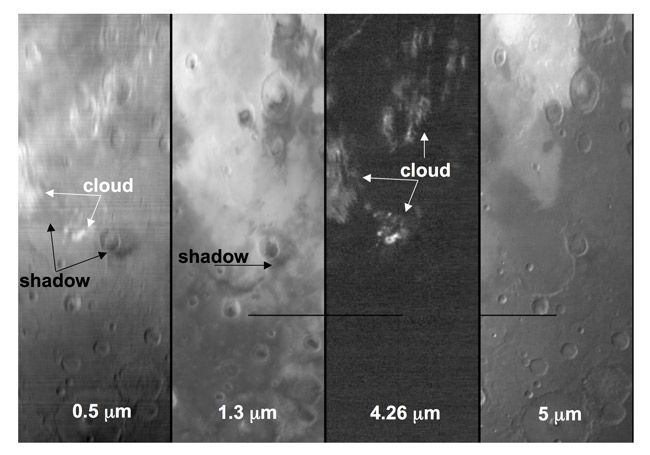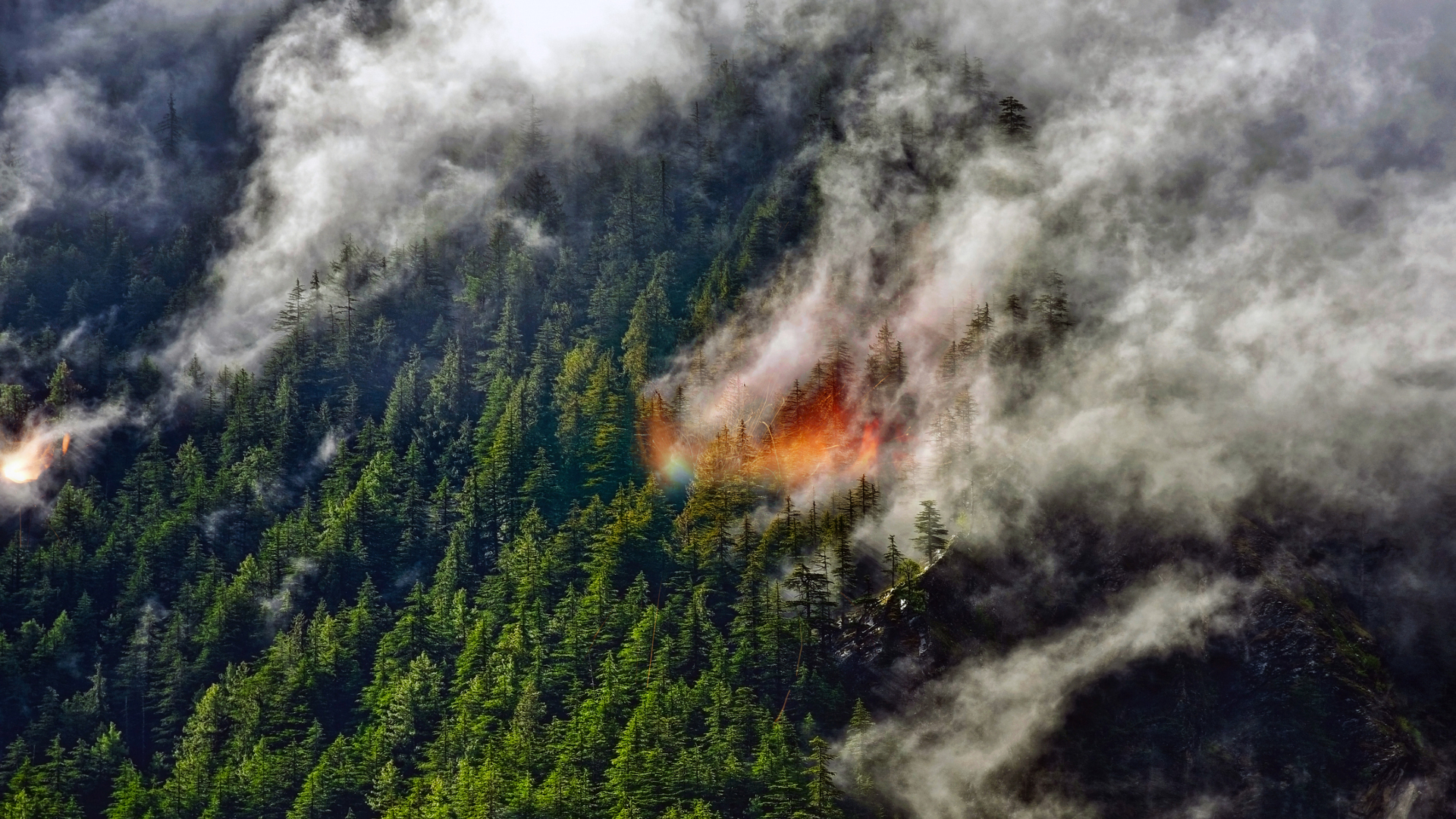Curious Clouds Seen at Mars

With itsthin atmosphere and scant moisture, Mars is often largely cloud-free. But newobservations reveal clouds of dry ice thick enough to cast significant shadowson the red planet.
Dust stormsare known to shroud vast swaths of Mars. Clouds have been photographedfrom the ground before, too.
The newresearch finds that carbon dioxide, the main component of martian air, freezesinto clouds so dense they dim the sun by about 40 percent. Frozen carbondioxide is commonly called dry ice here on Earth.
"Thisis the first time that carbon dioxide ice clouds on Mars have been imaged andidentified from above," said Franck Montmessin of the Service d?Aeronomie,University of Versailles and lead author of a paper in the Journal of GeophysicalResearch. "This is important because the images tell us not only abouttheir shape, but also their size and density."
Until now,only indirectinformation suggested what these clouds were made of. The new observationswere made by the European Space Agency's orbiting Mars Express.
Thecarbon-dioxide clouds are surprisingly high, some 50 miles (80 kilometers) andare several hundred miles wide. They're thicker than expected, according to Montmessin'steam.
Anothersurprise: the clouds are made of particles that are larger than expected. Theparticles are more than a micron wide (one-thousandth of a millimeter).Normally, particles of this size would not be expected to form in the upperatmosphere or to stay aloft for very long before falling back toward thesurface.
Breaking space news, the latest updates on rocket launches, skywatching events and more!
The clouds"cast quite a dense shadow and this has a noticeable effect on the localground temperature," Montmessin said. "Temperatures in the shadow canbe up to 10 degrees Celsius [50 degrees Fahrenheit] cooler than theirsurroundings, and this in turn modifies the local weather, particularly thewinds."
Theseclouds were found mostly near the equator. The researchers figure they're theresult of extreme variations in daily temperature that occur near the equator.
"Thecold temperatures at night and relatively high day-time temperatures causelarge diurnal waves in the atmosphere," Montmessin explained. "Thismeans there is a potential for large-scale convection, particularly as themorning Sun warms the ground."
Convection— warm air rising — is at the root ofEarth's weather, too.
On mars,bubbles of warm gas rise. At altitude, the carbon dioxide condenses, theresearchers explained. This releases heat, causing the gas and ice particles torise higher.
On Earth,water vapor condenses around tiny particles, often dust or salt, to formclouds. It's not yet clear what the martian moisture is condensing around. Theresearcher said it could be dust, micrometeorites or tiny crystals of waterice.
- VIDEO: Mars Entomopters
- TOP 10: The Wildest Weather in the Galaxy
- IMAGES: Visualizations of Mars

Space.com is the premier source of space exploration, innovation and astronomy news, chronicling (and celebrating) humanity's ongoing expansion across the final frontier. Originally founded in 1999, Space.com is, and always has been, the passion of writers and editors who are space fans and also trained journalists. Our current news team consists of Editor-in-Chief Tariq Malik; Editor Hanneke Weitering, Senior Space Writer Mike Wall; Senior Writer Meghan Bartels; Senior Writer Chelsea Gohd, Senior Writer Tereza Pultarova and Staff Writer Alexander Cox, focusing on e-commerce. Senior Producer Steve Spaleta oversees our space videos, with Diana Whitcroft as our Social Media Editor.
